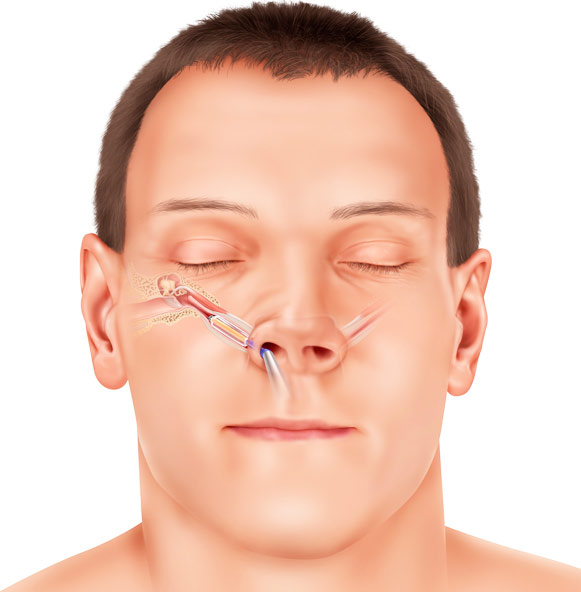Nose & Sinonasal Diseases

Nose & Sinonasal Diseases
Nose being the gateway to the respiratory system is an important organ. With an increasing incidence of allergies, nasal and sino nasal disorders are seen more rampantly. Moreover, due to the incidence of recurrence of Sino nasal polyps the management of such disorders is even more important.
Deviated Nasal Septum
The central septum which divides the nasal cavity into right and left compartment is deviated in many individuals but in some cases the deviation can be significant and consequently cause breathing issues. Septoplasty involves correction of such a deviation. The surgery involves an internal approach i.e.no external scars/sutures and there is no change in the shape or externa appearance of the nose. However, in case of an external appearance can also be surgically corrected by a procedure known as rhinoplasty. Deformities such as hump, deviated nose, binder’s syndrome etc can be corrected by rhinoplasty.
Sino Nasal And Chronic Rhino Sinusitis
Nasal blockage due to polypoidal tissue obstructing the normal drainage pathways of the sinuses can cause headache, loss of sensation of smell. These problems need to be addressed medically as well as by surgery.
Medical Management Of CRS
Medical management includes antibiotics, antiallergic, oral and intranasal steroids. Apart from this it is important to recognise cases of allergic rhinosinusitis and allergic fungal rhinosinusitis. Such cases must be investigated for allergens and provided therapy to prevent recurrence of the disorders. Moreover, the post-surgery all patients require follow up to prevent recurrences.
Surgical Management Of Sino-Nasal Diseases
Sino-nasal diseases such as polyps obscure the normal drainage pathways of the sinuses thereby causing symptoms. If not addressed the can cause several complications such as proptosis (bulging of eyeball), vision deterioration, loss of vision, loss of sense of smell, intra cranial extension (extension into the brain). Surgery for this condition is known as functional endoscopic sinus surgery or FESS. The surgery aims at restoring the functional capacity of the sinuses and is done by an endoscopic approach using powered instruments known as microdebrider which provides precise removal of diseased tissue and restoration of normal drainage pathway. Surgery for sinuses has been further revolutionised by the use of image guided system which is especially important while dealing with revision cases and cases involving base of skull such as tumours and csf leaks.
Balloon Sinoplasty
This is another advancement in managing the diseases on the sinuses. Balloon sinuplasty offers a minimally invasive technique in managing the diseases of the osteomeatal complex. This can also be used to manage the blocked pathways of the sinuses as an office-based procedure with minimal morbidity.
CSF Rhinorrhea
This condition where there is a clear fluid coming from one of the nasal cavities usually when the head is bend forward is important to recognise as it can be due to leakage of CSF (cerebro-spinal fluid) through a defect in the nose. It is important to recognise and treat the condition as it can lead to meningitis and is related complications with advancements in endoscopic sinus surgery, these leaks can be treated by minimally invasive technique. The leaks are usually identified by CT cisternography and MR cisternography and are then managed endoscopically.

